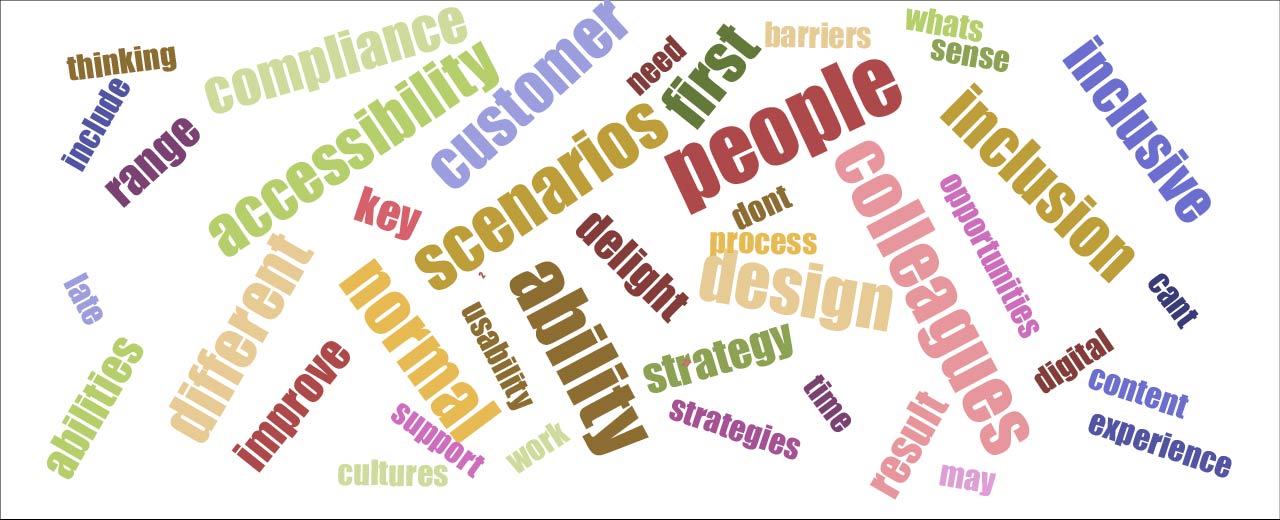 Reading Time: 2 minutes
Reading Time: 2 minutesCustomer first strategies aim to delight people, which makes universal design our topmost priority and step up beyond accessibility compliance. Accessible processes, products, and support all improve usability, and it’s universal inclusion that delivers delight.
We only deliver universal delight when we allow inclusion to drive the customer first strategy. Customer first strategies put people at the forefront of our business, enterprise, and design thinking to encourage upticks in adoption, key performance indicators, and retention. These only result from an all-people-first process. Without aiming for inclusion over accessibility, we’ll miss opportunities for growth across sectors where people experience different ability scenarios. Those long-ignored backlogs that could switch up our user experience (UX) from the ELT’s direction to release a MVP stay buried.
Accessibility segregates and inclusion includes
Accessibility compliance can leave people out—including our customers. Compliance may improve usability and it can fail to improve understanding of and usefulness of your product. Ridged accessibility compliance can’t include everyone with different abilities, cultures, and thinking than our own. It can lead to segregating content, experiences, and people. This is worse when leaving accessibility too late in our design process. You know, too late and moved to the backlog.
People experience a combination and variety of ability scenarios that are different to what we believe is normal. Their ranges of cognitive, cultural, physical, and regional ability change over time, adapt to circumstance, and are challenged by the barriers we design into our digital content, media, and on-stage presentations. Many of those barriers result from legacy print habit and a fear of engaging with our digital medium—code.
Inclusion from the workplace
We may also believe, “it’s just for us,” where “us” describes the sense of what’s normal ability for our colleagues and the customers we’ve met. When we work and socialize with people they form our mental model of what normal ability scenarios are. It’s creates ableism and don’t be alarmed if you are in part an ableist. It’s normal and maybe infectious, and it’s not incurable. Our inclusive processes and customer first strategy should include steps to overcome any institutionalized ableist beliefs and biases. Learning how different we all are is key.
When we work among the normal folk, we miss opportunities for quality input from colleagues with different ability scenarios. Of course, we can’t employ people with a full range of ability scenarios when we normally exclude their abilities from accessing our internal communications, processes, and tools. How can you hire colleagues you don’t support?
Getting the basics right is key. When your organization’s environments and by result its hiring are not inclusive of all abilities, then you’ll lock your colleagues into a limited sense of what’s normal. They’ll design to that limited blueprint too. Attitudes, communications, equipment, and tools need to be understandable and usable by colleagues with as wide a range of ability scenarios as possible. Only then can colleagues discuss and design for the range of people who count: Our customers.
It’s not all inclusion of people with ability scenarios. We need our valuable mix of colleagues from different cultures, races, and regions too, because that’s who people and our customers are.
